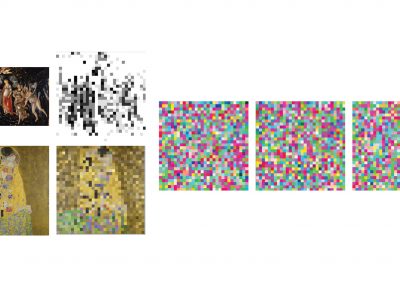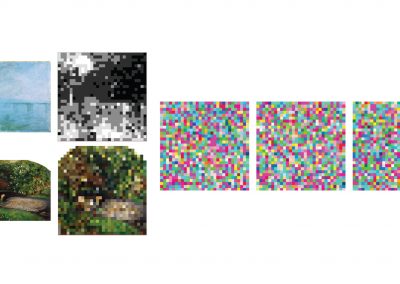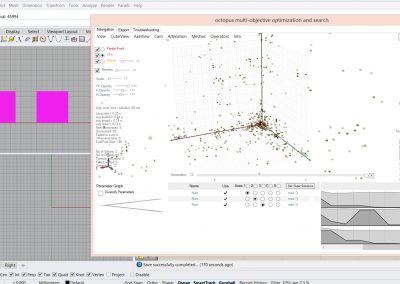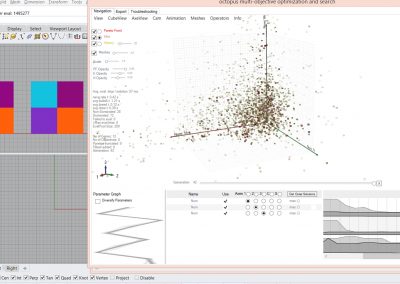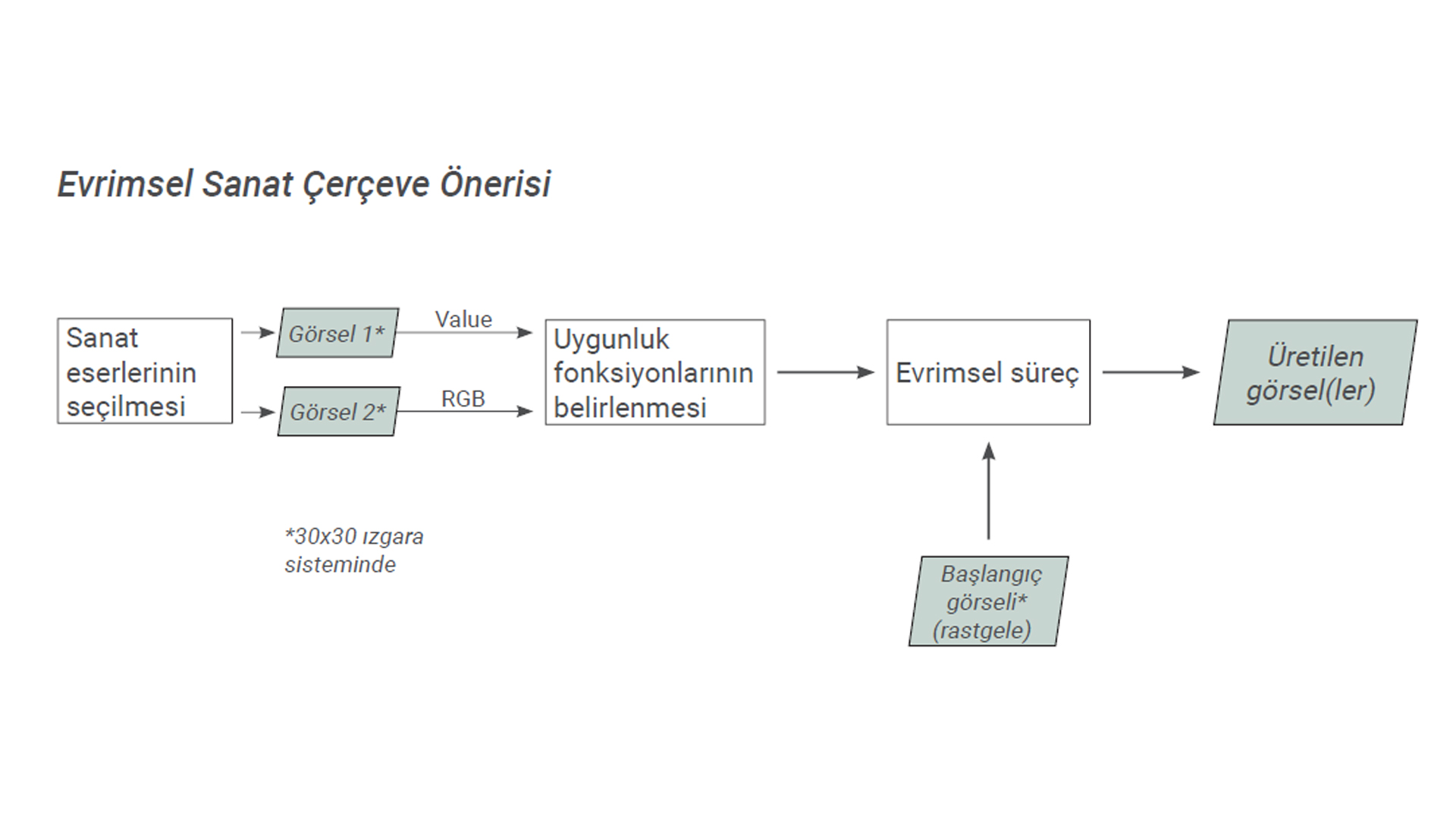
Evrimsel Sanat İçin Piksel Tabanlı Bir Çerçeve Önerisi
Evrimsel yaklaşımlar optimizasyon yöntemleri olarak kullanılmanın ötesinde yaratıcı üretimin de bir aracıdır. İnsanın göremediği ve düşünemediğini ortaya çıkarmaktadır. Hesaplamalı yaratıcılığın hem başlangıcı hem ürünü olarak ele alabileceğimiz evrimsel algoritmalar sanatın üretiminde önemli yere sahiptir. Seçilim, mutasyon, çaprazlama gibi kavramlar sanatın beklenmedik, şaşırtıcı, etkileyici arayışına destek olmaktadır. Bu doğrultuda çalışmada evrimsel yaklaşımların yaratıcılık açısından imkânlarına odaklanılarak evrimsel sanat üretimi için piksel tabanlı bir çerçeve önerilmiştir. Piksel tabanlı yaklaşım Grasshopper’da üretilerek denenmiştir. İki farklı sanat eseri seçilerek biri karşıtlık, diğeri renk değerleri üzerinden uygunluk fonksiyonu için işlemden geçirilmiştir. Rastgele oluşturulmuş başlangıç görselinin her bir hücresinin uygunluk fonksiyonu için seçilen görsellere yakınsaması üzerine algoritma oluşturulmuştur. Tek bir hücre ve dört hücre için gerçekleştirilen ayrı denemeler doğrultusunda da anlamlı bir sonuca ulaşmak için çok uzun süre beklenmesi gerektiği görülmüştür. Bekleme süresi sınırına rağmen algoritmanın doğru ve kabul edilebilir sonuçlara ulaştığı tek ve dört hücre denemelerinde kanıtlanmıştır. Çalışmanın ilerleyen aşamalarında süreyi azaltmak adına farklı yaklaşımlar denenecektir.
A Pixel-Based Framework Proposal for Evolutionary Art
Beyond being used as optimization methods, evolutionary approaches are also a tool for creative production. It reveals what humans cannot see and think. Evolutionary algorithms, which we can consider as both the origin and the product of computational creativity, have an important role in the production of art. Concepts such as selection, mutation and crossover support the search of the unexpected, surprising and impressive in art. In this direction, a pixel-based framework was proposed for the production of evolutionary art, focusing on the possibilities of evolutionary approaches in terms of creativity. The pixel-based approach was produced and tested in Grasshopper. Two different works of art were selected and processed for the fitness function, one for contrast and the other for color values. The algorithm was created upon the convergence of each cell of the randomly generated initial image to the images selected for the fitness function. In line with the separate experiments carried out for a single cell and four cells, it was seen that it was necessary to wait for a very long time to reach a meaningful result. It has been proven in single and four cell trials that the algorithm achieves accurate and acceptable results despite the waiting duration limit. In the later stages of the study, different approaches will be experimented with in order to reduce the processing time.
© 2021 Istanbul Technical University Graduate School, Department of Informatics, Architectural Design Computing Program. All Rights Reserved
